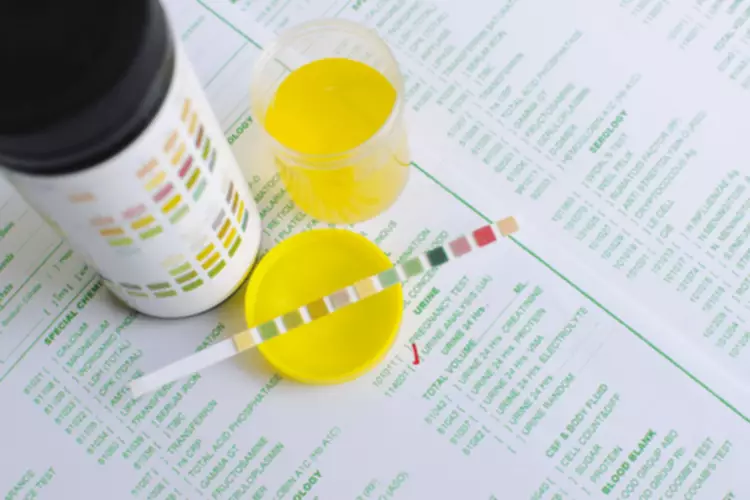Content
- Preventing Blood Clots by Overcoming Alcohol Abuse
- Drinking alcohol is pretty common for many people.
- Adverse Side Effects of Blood Thinners
- Blood Thinner Drugs and Alcohol: A Dangerous Mix?
- The Long-Term Effects of Alcohol
- Types of Drug Interactions With Alcohol
- Negative Side Effects Of Heavy Alcohol Use
Alcohol is an independent risk factor for mortality and fibrinolysis shutdown in trauma patients. Further, alcohol is an independent risk factor for mortality among patients who experienced fibrinolysis shutdown. The newer (novel) oral anticoagulants do not have alcohol-drug interactions listed in their product labeling. However, if you consume large amounts of alcohol at one time or drink alcohol on a daily basis, be sure to discuss this with your doctor. Heavy alcohol use may increase the risk of a stomach ulcer or bleeding, and this can be worsened by an anticoagulant. It first reduces the number of platelets in the blood by getting in the way of blood cell production.
What are the symptoms of drinking too much alcohol?
Symptoms of alcohol overdose include mental confusion, difficulty remaining conscious, vomiting, seizures, trouble breathing, slow heart rate, clammy skin, dulled responses (such as no gag reflex, which prevents choking), and extremely low body temperature. Alcohol overdose can lead to permanent brain damage or death.
Exceeding the recommended guidelines above is considered heavy drinking. We publish material that is researched, cited, edited and reviewed by licensed medical professionals. The information we provide is not intended to be a substitute for professional medical advice, diagnosis or treatment. It should not be used in place of the advice of your physician or other qualified healthcare providers. Although low-to-moderate drinking is not linked with high blood pressure, heavy drinking may cause the condition. Doctors are still investigating the mechanisms by which drinking can lead to high blood pressure.
Preventing Blood Clots by Overcoming Alcohol Abuse
The medical consequences of these adverse effects can be severe. These direct effects may be exacerbated by the presence of other alcohol-related disorders, such as liver disease and nutritional deficiencies. Abstinence can reverse many of alcohol’s effects on hematopoiesis and blood cell functioning. Our data are furthermore, in agreement with conclusions drawn by a number of comprehensive reviews and a meta-analysis on the topic [12,13,14].
Fourth, the necessity for performing ROTEM test was decided by the physician based on hemodynamic sign, ultrasound results, and injury mechanism. Hence, the possibility of a selection bias cannot be totally excluded. Since blood thinners and alcohol are both anticoagulants, taking them together can cause serious issues. Having more than three alcoholic beverages a day can put you at a higher risk of hemorrhagic stroke.
Drinking alcohol is pretty common for many people.
We report here how alcohol is correlated advantageously with biomarkers of blood clotting such as total and γ’ fibrinogen, as well as certain clotting properties by comparing drinkers with abstainers. More specifically, from a genetics perspective, alcohol modulated the influence of fibrinogen SNPs on total fibrinogen concentrations and the fibrinogen SNPs as well as the FXIII SNP (rs6003) on clot density. This implies that those harbouring specific genetic variants could blood thinners and alcohol benefit more than others in respect of alcohol consumption in their susceptibility to coagulation and fibrinolysis. Alcohol is the most commonly used drug whose consequences include the suppression of blood cell production, or hematopoiesis. Chronic excessive alcohol ingestion reduces the number of blood cell precursors in the bone marrow and causes characteristic structural abnormalities in these cells, resulting in fewer-than-normal or nonfunctional mature blood cells.
In some people it might cause numbness, pain or a pins-and-needles feeling. In others, it may cause constipation, erectile dysfunction or muscle problems. Gout, a painful inflammatory condition, can flare up when triggered by certain food or drink.
Adverse Side Effects of Blood Thinners
A total of 686 patients who presented to our trauma center and underwent rotational thromboelastometry were included in the study. Logistic regression analysis was performed to determine whether alcohol was an independent risk factor for in-hospital mortality and fibrinolysis shutdown. Always consult your doctor about drinking while on your blood thinner medication—they are the best person to decide if it’s safe for you. Generally, light-to-moderate drinking is considered safe for most people on most types of blood thinners.
AC is an enzyme that plays a role in the transmission of signals from a cell’s exterior to its interior; the enzyme’s levels in the body are genetically determined. Several studies have found that AC levels in the platelets as well as in some white blood cells are frequently reduced in alcoholics compared with nonalcoholics, even after long periods of abstinence. Because a single gene appears to determine the level of platelet AC activity, it is https://ecosoberhouse.com/ likely that low platelet AC activity is an inherited trait in many alcoholics and therefore could be used as a trait marker. Recent studies indicate, however, that the gene responsible for low AC levels does not actually cause alcoholism, but may increase the risk of developing the disease. Atherothrombosis and VTE share common risk factors and the pathophysiological characteristics of inflammation, endothelial injury, and hypercoagulability.
Unlike previous studies, our study shows that the mortality rate of the alcohol-positive group was significantly higher than that of the alcohol-negative group. Furthermore, alcohol was identified as an independent risk factor for mortality after adjustment for age, sex, and ISS. This meant that alcohol-intoxicated patients were mostly men, young, and severely injured, but the alcohol itself could contribute to an unfavorable prognosis. The reason is not clear, but one possible explanation is the heterogeneous pathological fibrinolysis phenotypes, such as hyperfibrinolysis and fibrinolysis shutdown, in the alcohol-positive group. The unusual feature of coagulation impairment due to alcohol is that it is not correlated with clinical results [2, 3, 7, 10, 12]. Howard et al. conducted a single-center study using TEG on 264 severely traumatized patients at a Level 1 trauma center [3].

For example, compared with healthy people, alcoholics are less resistant to infections by microorganisms that normally are eradicated by monocytes and macrophages, such as the bacteria that cause tuberculosis and various forms of pneumonia. Similarly, studies of intoxicated laboratory animals demonstrated reduced elimination of bacteria by the monocyte-macrophage system. Further studies indicate that alcohol impairs monocyte/macrophage function rather than production. Thus, the cells frequently remain at their normal locations in the tissues rather than migrate to the sites of infections.
The Long-Term Effects of Alcohol
Although our results do not reveal the mechanism for this association, according to our literature review, we suggest that several possible explanations exist for the mechanism for this association. “We found that among both men and women, an intake of three tosix drinks per week or more was linked to lower levels of stickinessmeasured by aggregability,” said Mukamal. The effect of alcohol on the outcome and fibrinolysis phenotype in trauma patients remains unclear.
Does alcohol affect blood thinners?
Firstly, alcohol is itself a blood thinner and can affect how well blood clots. If you combine it with a medical blood thinner, the effects of both substances can be exacerbated and reduce the blood's ability to clot. Secondly, drinking alcohol can interfere with how medicine works, and blood thinners are no exception.
